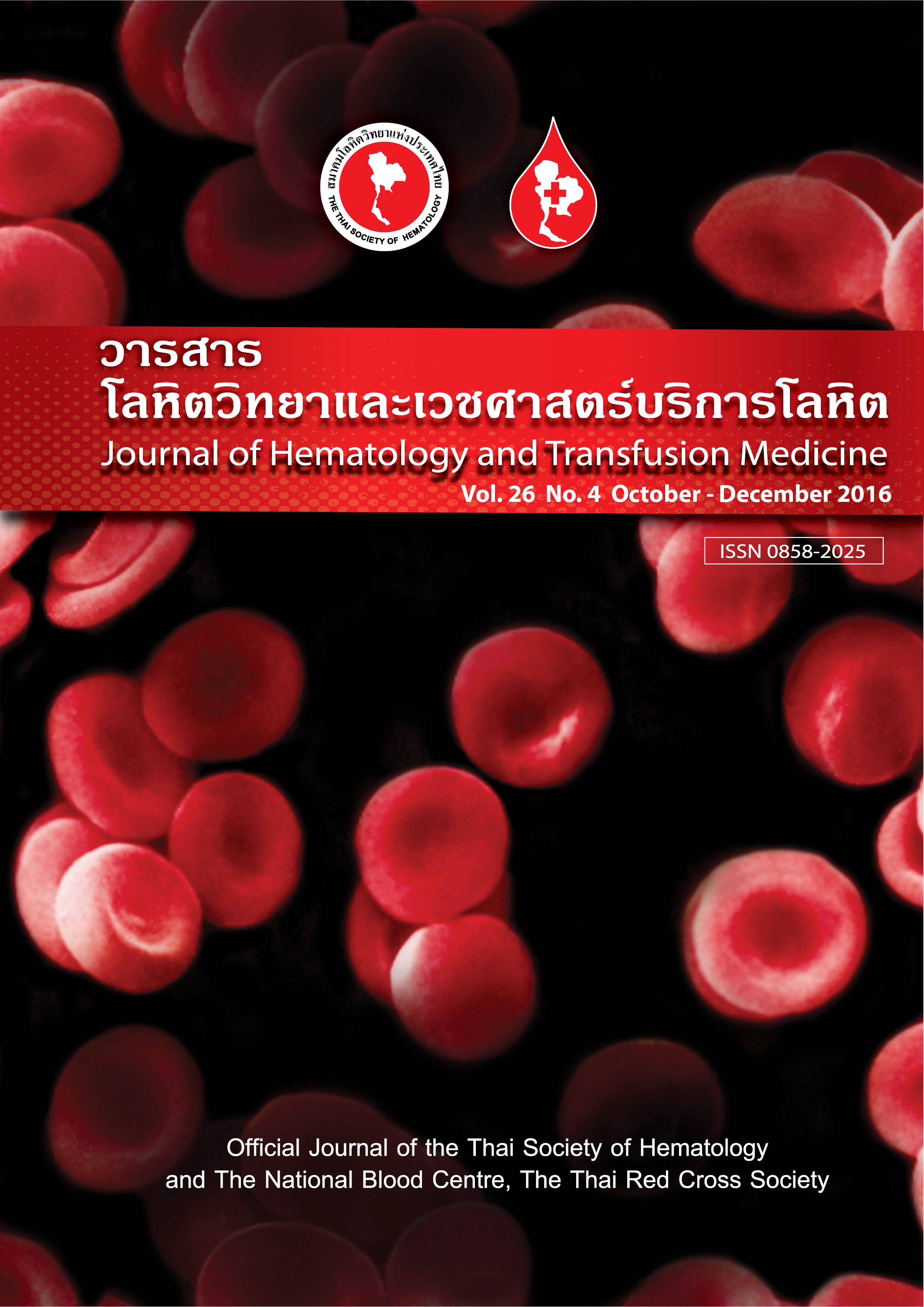Screening for α-Globin Gene Mutations Causing Severe Hb H Disease Using High Resolution Melting Analysis
Keywords:
α-Globin gene mutation, Hb H disease, High resolution melting (HRM) analysis, Quantitative PCR, α-ThalassemiaAbstract
A number of uncommon nondeletional α-thalassemia (thal) 2 mutations leading to severe forms of Hb H (α-thal 1/α-thal 2) have been overlooked by routine screening techniques. High resolution melting (HRM) analysis protocols were developed to detect six known rare α-thal 2 alleles in this study including initiation codon del A, ATG>TG (HBA2:c.1delA; α2 initiation codon Met>0), initiation codon del T, ATG>AG (HBA2:c.2delT; α2 Initiation codon Met>0), alpha2 codon 30 deletion CAG (HBA2:c.91_93delGAG; α2 30(B11) Glu>0), Hb Quong Sze (HBA2:c.377T>C; α2 125(H8) Leu>Pro), donor splice site mutation at IVSI-I (HBA1:c.95+1G>A), and Hb Queens Park (HBA1:c.98T>A; α1 32(B13) Met>Lys). These mutations were associated with severe forms of Hb H disease in Thailand. When the optimized HRM technique was performed in 100 random blood samples it showed heterozygous Hb Westmead (HBA2:c.369C>G; α2 122(H5) His>Gln) in 3 samples and 5 samples carried HBA2:c-43(G>C) polymorphism differing from the normal controls. Therefore, HRM analysis is a useful technique that can help clinicians recognize several rare mutations in Hb H disease



